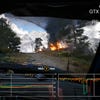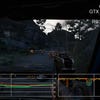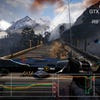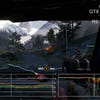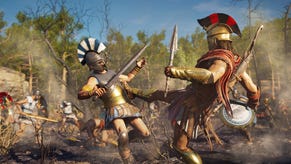Face-Off: Far Cry 4
A tech showcase on console, but what's up with the PC game?
Far Cry 3 received acclaim on the last-gen platforms, but it was clear that the Dunia engine powering the game was simply too much for the ageing 360 and PS3 to handle, with intrusive tearing and sub-par frame-rates seriously impacting the experience. However, our recent in-depth hands-on with the PS4 version of the sequel paints a very different picture: free from the limitations of old technology, the Dunia engine is allowed to shine, delivering a level of graphical polish only seen in high-end PC releases, along with a near-solid 30fps update in native 1080p. It's an impressive start for Far Cry 4 on consoles - but how well does the Xbox One version hold up in comparison, and what kind of graphical leap forward are we getting on PC, where the series has always been at the cutting edge?
First impressions of Far Cry 4 on Xbox One are positive. Image quality is very clean and the overall presentation compares favourably to the PS4 game. On close inspections, detail looks a little softer and less refined, but otherwise it holds up very well during gameplay. Pixel counting - not very easy here, for reasons we'll go into later - reveals a 1440x1080p framebuffer horizontally scaled up to full-HD resolution (1920x1080), although artefacts from the resizing process appear subdued compared to most sub-1080p games. In comparison we see a native 1080p image deployed on the PS4 that appears suitably sharp, and indeed clearer than the Xbox One game, but the Microsoft console is punching enough above its weight with a presentation that - by and large - defies its sub-native pixel-count.
Halo 2 Anniversary shows how well a horizontal upscale can work in providing reasonably crisp image quality, but with Far Cry 4 there's a lot more going on behind the scenes, via the use of an impressive new anti-aliasing technique known as HRAA. The effect is used in both console versions of Far Cry 4, and is a comprehensive solution that blends various elements from different anti-aliasing techniques together, using both post-process and temporal sampling. The end result is that HRAA tackles jaggies across various elements of the scene poorly covered by traditional post-process AA algorithms and multi-sampling (MSAA), and in combination with a good upscaling filter, helps to mitigate the usual artefacts of sub-native rendering.
What HRAA brings to the table is worthy of a Digital Foundry feature in its own right, but let's look at the basics. For Xbox One, the choice of resolution means that scaling artefacts are only apparent on one axis. On top of that, for every four horizontal pixels rendered, it draws upon three source pixels, an additional three from the previous frame plus accumulated data from previous frames. HRAA works nicely not just for anti-aliasing, then, but also in reconstituting something approaching the quality of a full 1080p framebuffer when it is working at its best. PlayStation 4 looks even cleaner, mostly because it appears to have access to more temporal data than Xbox One version of the algorithm and doesn't need to upscale at all.
Alternative comparisons:
In terms of general image quality, HRAA deals with troublesome elements - such as foliage and sub-pixel detail - extremely well. Trees appear suitably smooth in both PS4 and Xbox One versions of Far Cry 4, while shimmering caused by fine geometry is mostly taken care of without impacting on texture clarity to a noticeable degree. Due to using more samples on PS4, coverage is generally a little more refined on Sony's console. However, in its current implementation, HRAA isn't a perfect silver bullet to the age-old aliasing problem: the effect still breaks down on both consoles when dealing with very thin power lines, while hair shaders also aren't covered, leading to the fluffy coats on wolves and other animals displaying a distinctive moire-like shimmer across their surface.
We usually see the PC version automatically trump the consoles when it comes to image quality via the ability to choose whatever resolution and anti-aliasing solution best suit your hardware and performance expectations, but in this case things aren't quite so straightforward. MSAA (in 2x, 4x, and 8x variants) and SMAA are provided in Far Cry 4, while owners of Nvidia cards also get the addition of TXAA. Out of all these solutions SMAA provides the best overall coverage while using little in the way of GPU resources: images appear clean and pretty artefact-free, although there is a visible amount of blur across the scenery that doesn't occur on consoles. It's clear that the HRAA used on the PS4 and Xbox One is a better overall solution to tackling jaggies while preserving texture detail, so its absence on PC is a missed opportunity. Based on the public information released to date by Ubisoft, it's probably the case that HRAA requires extremely low-level access to the GPU - DirectX 11 alone probably isn't up to the task.
MSAA and TXAA both provide sharper image quality compared to SMAA; however, foliage isn't covered by these solutions and this means the lush Himalayan landscape is left with heavy pixel crawl across trees and other greenery - something that is totally eliminated on console. The only way we could approach the results of the console versions was to use one of the multi-sampling methods in combination with transparency super-sampling available via the GPU control panel. TXAA in particular works nicely here, but the level of graphics resources required to get the job done is truly mammoth. And even then, the game just doesn't look quite right. Dunia seems built for post-process AA, with multi-sampling, introducing depth issues to some transparency effects.
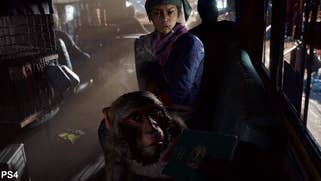
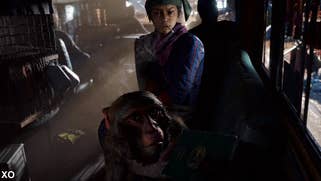

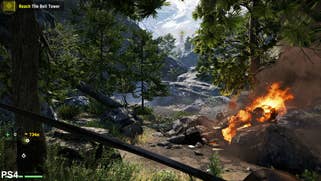
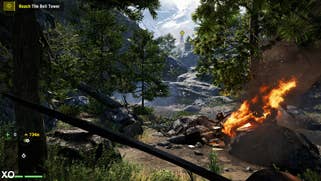
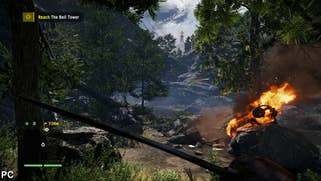
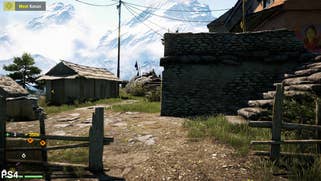

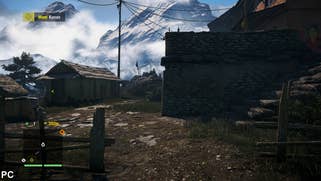
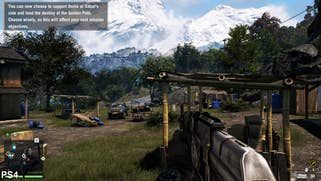
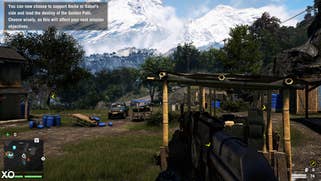
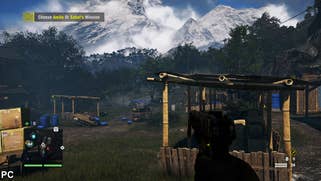
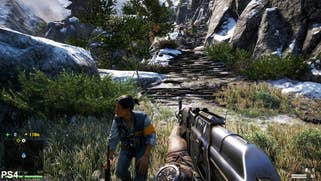

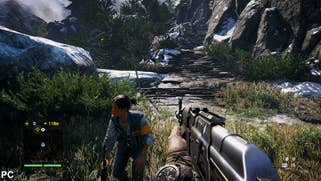
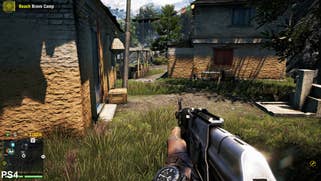
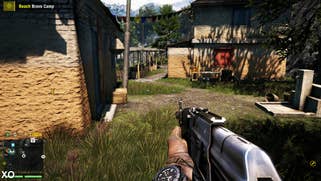
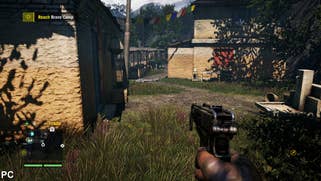
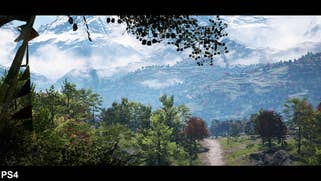
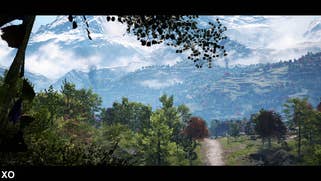
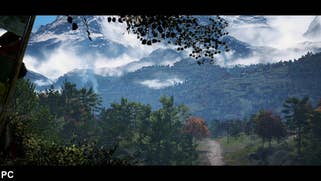
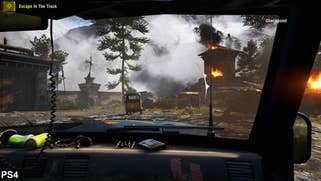
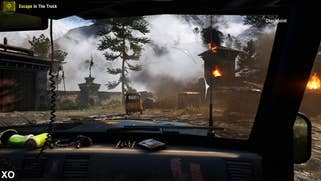
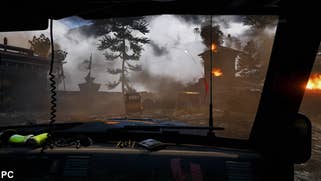
Away from image quality, both consoles share the same core set of assets and effects throughout Far Cry 4. Quality levels appear identical in most areas, although curiously we see evidence of lower resolution ground textures on the Xbox One in one particular location, and missing trees in the distance on the PS4 in another. We suspect that occasional streaming oddities are to blame here, since these differences only seem to occur in areas directly after a cut-scene. Beyond this, the only differences we see come down to the randomised placement of wooden shacks, garden fences, foliage, and other incident objects across the environment, where these elements aren't always rendered in the same place.
Once again, it's up to the PC game to pull ahead and give us a tangible upgrade over the PS4 and Xbox One releases. Running on the ultra preset, the lush mountain forests of Kyrat are fleshed out more fully, with more detail added to faraway scenery. This comes across nicely when gazing across the mountainous landscape, where the placement of extra trees on the PC gives distant hilltops and valleys a fuller look than on console. On top of this, LOD (level of detail) transitions are less aggressive: the primary benefit here is that higher quality assets are used on distant objects, leading to more refined details on elements such as cars, bikes, and lanterns. On the consoles, the elements have a slightly blockier looks until you move closer.
The core artwork is also given a boost on PC via deployment of higher-resolution textures and improved levels of anisotropic filtering, which bestows a greater amount of high frequency detail to rocks, brickwork, car dashboards and other elements. Detailed texture layers are present on consoles, although these appear to be used more liberally on PC, adding an extra intricate touch to various surfaces. Other upgrades are a little more subtle but nonetheless effective at helping to deliver a more refined look to to the way locations are presented throughout the game. In particular, PCSS (percentage closer soft shadows) give these elements a more natural appearance that changes depending on the positioning and distance from the casting light source, while the use of HBAO+ results in accurate ambient shadows that look smoother and feature better coverage across foliage.
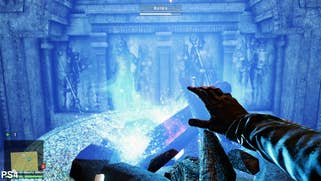

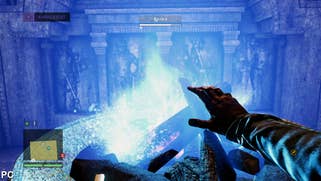

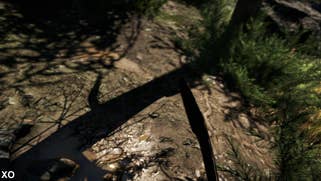
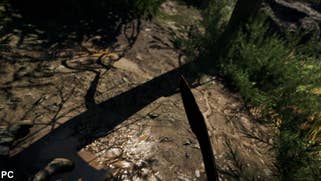
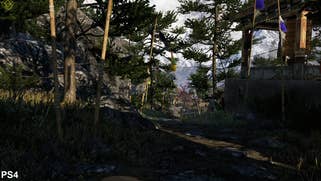
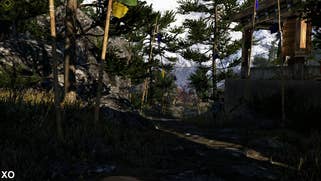
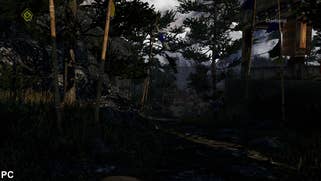
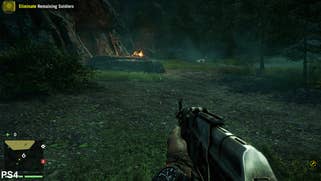

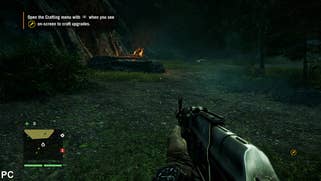
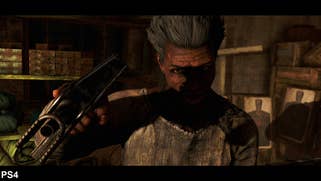


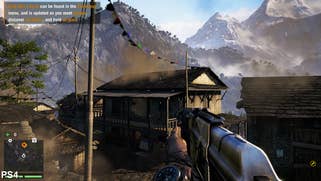
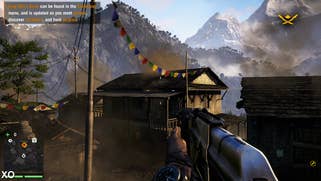
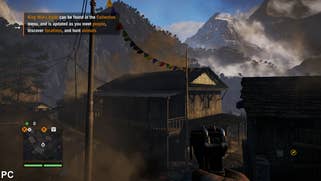
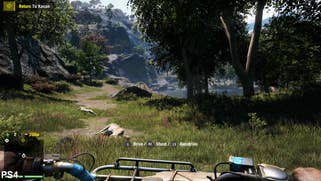


Tessellation is used exclusively on the PC to give trees a fuller appearance, although the effect is hard to pick up outside of still screenshots and direct comparison videos. Use of 'enhanced' tessellated light shafts is also a nice touch, allowing god rays to beam through foliage distinctively before spreading out across the landscape. However, the effect is a little too pronounced for its own good: god rays can literally cover entire locations, leading to completely washed-out images when you are standing in the affected area. As such, we found the effect impacted on our enjoyment of the game and switched to using volumetric fog instead, which adds a pleasant increase in the depth and density to mist across the bottom of valleys where pockets of moisture often build up.
Collectively, the extra layers of graphical polish give the game a more refined appearance, allowing natural details - such as the rough texture of brickwork and rock faces - to come to the fore, while the inclusion of HBAO+ and soft shadows brings more realism to how environments and characters are shaded. In comparison, we see the consoles operating using settings that appear to closely match that of the PC version's high preset. Some of the differences are quite subtle - such as the reduced precision of shader effects - while others, like the improved texture work, LOD settings and shadows on PC stand out more noticeably. Curiously, motion blur is one element that appears less pronounced on the PC, and often seems to be missing during the real-time cut-scenes. On the other hand, depth of field is more selective of what elements are blurred compared to the PS4 and Xbox One versions, producing a more realistic effect. The PC enhancements are welcome overall, but in terms of the overall presentation, the law of diminishing returns kicks in once you move past the high preset - and performance, while initially promising, proves to be a real problem.
In theory, there's no problem whatsoever running Far Cry 4 on high settings and achieving a 1080p30 presentation on hardware as lowly as a sub-£100 GeForce GTX 750 Ti. In fact, the game even includes a 30fps lock tweakable (the 'sparse' v-sync option) though this introduces frame-pacing issues - using the frame-rate limiter in Riva Tuner Statistics Server is the better option. Scaling up, a GTX 760 handles ultra settings at 30fps well enough, while GTX 780 and higher should in theory give you 60fps in most scenarios with most settings at their max. Combined with the image quality improvements, Far Cry 4 should trounce the console versions - even with the omission of HRAA. Unfortunately, the game is plagued with stuttering issues that have a clear impact on the gameplay experience.
Even with a GTX 980 in play, we still see frame-rate drops as we move around the landscape - with 50ms stutter commonplace. It's particularly bad when driving vehicles, suggesting a background streaming issue. We wondered if this was a VRAM issue, but swapping in a 6GB GTX Titan made no difference whatsoever. For those wondering, AMD graphics cards are similarly affected. Various fixes have been suggested but as things stand, we believe that only by disabling the highest quality texture mip level can you minimise the stutter. To do this, go to the 'My Games' folder in the 'My Documents' folder, then open 'GamerProfile.xml' in Notepad. Change DisableLoadingMip0 = "0" to DisableLoadingMip0 = "1", and make the same change to GPUMaxBufferedFrames="0". All other solutions do nothing for us across a variety of PCs and graphics cards, and even this only lessens the problem - it doesn't eliminate it. We note that GPU VRAM utilisation drops by 1GB, so there may be a reduction in texture quality. Overall, this issue sounds very much like the disastrous Watch Dogs texture streaming situation - which remains a problem to this day. We just can't quite understand why an issue that caused Ubisoft a lot of problems in the past wasn't addressed, let alone why it has manifested again in another top-tier product.
In terms of console performance, 60fps is out of the question with the level of graphical quality on offer in Far Cry 4's detailed open world, with the developer targeting a 30fps update instead. Both PS4 and Xbox One deliver a fluid and responsive experience where drops in performance are rare and have little impact on how well the game plays - controls have a nice, twitchy feel allowing for quick and precise aiming in fast-paced shoot-outs. After the inconsistency of the PC experience, running at a locked frame-rate is like a breath of fresh air (we should also point out that capping at 30fps still causes stutter issues on PC).
For the most part, both consoles offer up a highly consistent experience, with only a few short dips in more heavily demanding scenes. Explosions and vehicular gunfights see frame-rates briefly deviate from the desired 30fps refresh, but the engine is quick to recover and these blips in performance only happen on occasion - blowing up oil drums and letting off grenades don't always noticeably impact on frame-rate, and this leads to explosive combat sequences playing out smoothly on a regular basis. There are some mild interruptions to the otherwise solid 30fps update when driving across the environment at speed - usually at night - in the form of dropped and torn frames. However, these are generally mild enough to go by unnoticed when playing the game.
Overall, performance sticks closely to 30fps on both consoles, but the Xbox One comes out on top, displaying slightly higher frame-rates during intense shoot-outs and generally fewer dips elsewhere. It's likely that the difference in resolution between the two versions is the cause here, with the Xbox One rendering 25 per cent fewer pixels, and using a less refined version of HRAA into the bargain. That said, the difference doesn't stand out during a general run of play, and neither version suffers from performance issues that get in the way of enjoying how the unpredictable gunfights turn out.
Far Cry 4: the Digital Foundry verdict
Far Cry 4 is a game that feels perfectly at home on the current-gen consoles, with smooth frame-rates, detailed environments free from unsightly pop-in, and some superb art and effect work that combines to create an absolutely beautiful environment and solid gameplay. There's the sense that the Dunia engine hasn't been radically overhauled from its last-gen iteration - but it's a great fit for the new console hardware, and the upgrades that have been implemented add an excellent layer of additional sheen.
In terms of the multi-platform comparison, the PS4 gets the nod here for its sharper native 1080p presentation and almost solid 30fps frame-rates. In comparison, the image quality isn't quite as pristine on the Xbox One, although frame-rates are slightly higher under load, but the quality of the presentation overall remains excellent. It's a great buy on either platform.
The PC version could have been brilliant - and in some respects it is - but we're surprised that the game shipped with obvious issues not found in the console releases. On the one hand, Ubisoft deserve kudos for the range of additions made to the game over its console counterpart. They're not game-changing as such - indeed, some of the ultra options show next to no improvement at all - but the overall impression is that high-end GPU owners do get a thorough work-out for their kit, and the Nvidia enhancements (TXAA apart) do help. At the same time, there's enough scalability here that those with entry-level enthusiast gaming hardware should get a decent experience. Unfortunately, the game features the same problem as Watch Dogs: genuine issues with background streaming resulting in off-putting stutter. We're looking into potential user-side solutions, but really and truly, Ubisoft must fix this before we can recommend the PC release.


